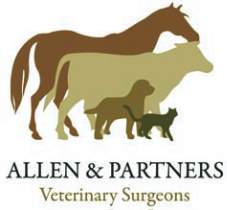Basic HTML Version






February
feature...
by
Nadine Fletcher
RVN, Cert AAB, Dip Dog
Psy, ACAI, MVNA
Summerhill Veterinary Centre
Small Talk
is published by:
XLVet UK Ltd, Carlisle House, Townhead Road, Dalston, Carlisle CA5 7JF
© XLVet UK Ltd
No part of this publication may be reproduced without prior permission of the publisher.
Disclaimer:
XLVets does not necessarily share the views of contributors. No responsibility can be accepted for opinions
expressed by contributors, or claims made by advertisers within this publication.
practice
news...
We would like to wish Wendy
Scourfield all the best on her
maternity leave, she will be missed
but hopefully back in a year or so.
Rob, Lois and Sian will now be
doing all the small animal work
and they look forward to meeting
you and your pets.
As it's the New Year we thought
we would concentrate on weight
loss in your pets.
Obesity can increase the risk of health
problems in your pets such as joint disease,
heart problems, diabetes and it reduces life
expectancy. Below are some handy tips on
reducing your pet’s weight;
1. Walking!
Good for you and the dog.
Try adding an extra 15 mins to your
daily route.
2. Low Calorie food
- you can buy this
from the vets. We have a few varieties
for you to try. A good quantity of food
but with fewer calories means your pet
will still feel full after meal-time.
3.
You can add a little veg to bulk out
your dog's dinner when you are cutting
down on the amount of biscuits or meat.
Cabbage, carrots, broccoli etc are
good choices (but no onions, which
are bad for pets!)
4.
Don't leave food out all day for your
pet. Leave out the assigned food and lift
what is left after an hour or so. Contrary
to common belief, a cat will not always
regulate how much it eats.
5.
Cut out doggie chocolates, chews
and other ‘treats’. They are just
empty calories.
6.
Weigh your pet’s daily allowance of
food and if you must give a treat, take
a biscuit out of the daily allowance.
They will not notice if there is the odd
biscuit missing and will still receive their
daily titbit for being good.
For a free weight check please call the
surgery and make an appointment.
24HR EMERGENCY SERVICE
TELEPHONE: (01994) 240318
Socialising
your new puppy
The aim of socialising your puppy is to
encourage confidence; a confident puppy is
more likely to develop into a confident adult.
Sounds easy doesn't it? It is, except that
puppies have a sensitive period during which
the majority of this socialisation and positive
exposure should occur and sadly, this window
of opportunity is VERY small. The optimum
time for socialisation is actually before the
puppy has even left the breeder’s premises, at
3-5 weeks of age. At 3 weeks old the puppy
is able to hear, see, smell and move and is in a
natural state of relaxation. By 5 weeks of age
the puppy becomes more reactive, it is more
likely to startle easily and jump and be less
confident around new things. Ideally puppies
that are going to live indoors should be housed
indoors with the breeder thus allowing them to
get used to domestic noises and sights such
as the telephone ringing, the vacuum cleaner,
the television etc. CD's can be played to mimic
noises that they may be exposed to in later life
such as trains, buses, aircraft, fireworks,
gunshots and thunder. The puppy should also
experience car journeys, meeting other dogs
(that are vaccinated and of known good
temperament), other animals and a variety of
people, including children. So the first step in
socialisation is choosing a breeder that has
already started the process for you.
The ideal age at which to get your puppy from
the breeder (as far as behaviour development
dictates) is at 7-8 weeks of age. From then
until 18 weeks of age the puppy is still
receptive to new experiences, and you
should continue to expose them to a variety
of dogs, other animals and people. As the
owner, you must handle the puppy every day,
grooming and touching the puppy all over and
the puppy should experience being left alone
(only for short periods) as well as visiting the
groomers, kennels and veterinary surgery to
ensure positive associations with each of them.
Until the puppy is fully vaccinated it may be
carried out along the street to expose it to the
sights and sounds of traffic and can learn to
travel in cars and on public transport.
All of this should be done in addition to
attending a puppy class (which most vet
practices run). Any new puppy should be
encouraged to attend, regardless as to
whether it is your first puppy or whether you
already have other dogs at home. These
classes allow your puppy to develop
communication skills and are also important to
promote confidence and prevent dog to dog
aggression as an adult. These classes should
be undertaken before the puppy is 16-18
weeks old. However, it is important to choose
carefully ensuring that all interactions are
well supervised and controlled so as not to
develop any bully type behaviour or negative
association with handling and interaction
with the other puppies.
Socialisation takes time and effort, but failure
of the breeder and you the owner to
undertake this important step in your puppy's
development can RUIN a dog. Work hard
now and reap the benefits for the whole of
your dog's life.
Most people know that they need to socialise a new puppy, but what does
this actually mean? And more importantly, how do you actually do it? The
socialisation process involves positive associations between your puppy and
other people, other dogs, other animals, environments, sights, sounds and
smells. Inadequate exposure or negative associations will commonly result
in anxiety and fear, often leading to fear aggression.
